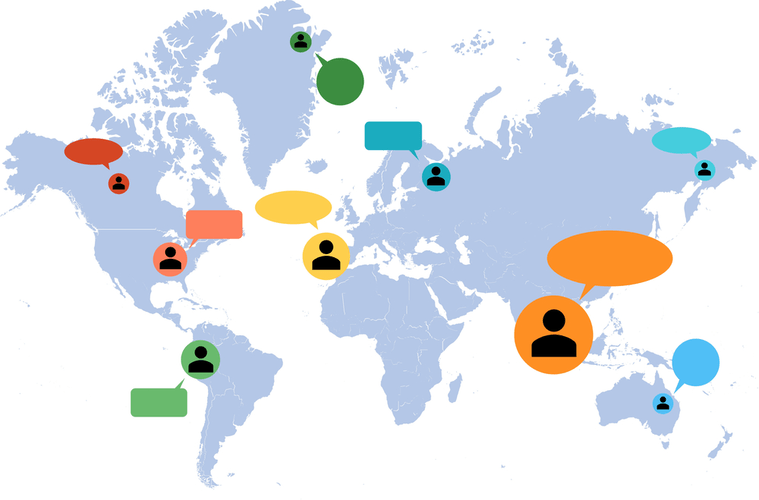A regression tree, another form of decision tree, leads to quantitative decisions. Typically, in this method the number of “weak” trees generated could range from several hundred to several thousand depending on the size and difficulty of the training set. Random Trees are parallelizable since they are a variant of bagging. However, since Random Trees selects a limited amount of features in each iteration, the performance of random trees is faster than bagging. Algorithms for constructing decision trees usually work top-down, by choosing a variable at each step that best splits the set of items.

The biosphere is dependent on the metabolism, death, and recycling of plants, especially trees. Their vast trunks and root systems store carbon dioxide, move water, and produce oxygen that is released into the atmosphere. The organic matter of the soil develops primarily from decayed leaves, twigs, branches, roots, and fallen trees, all of which recycle nitrogen, carbon, oxygen, and other important nutrients.
Advantages of Classification and Regression Trees
A commonly used measure of consistency is called information which is measured in bits. In this example, Feature A had an estimate of 6 and a TPR of approximately 0.73 while Feature B had an estimate of 4 and a TPR of 0.75. This shows that although the positive estimate for some feature may be higher, the more accurate TPR value for that feature may be lower when compared to other features that have a lower positive estimate.

It reaches its minimum when all cases in the node fall into a single target category. A special case of a decision tree is a decision list, which is a one-sided decision tree, so that every internal node has exactly 1 leaf node and exactly 1 internal node as a child . While less expressive, decision lists are arguably easier to understand than general decision trees due to their added sparsity, permit non-greedy learning methods and monotonic constraints to be imposed.
Popular classifications
Since A and B converge at a common ancestor first as we move backwards, and B only converges with C after its junction point with A, we can say that A and B are more related than B and C. Not necessarily things like closets or rooms; I personally score low on the organization front for both of those things. Instead, people often like to group and order the things they see in the world around them.
- The estimate is about eight times higher than previous estimates, and is based on tree densities measured on over 400,000 plots.
- This is most useful at the local rather than the worldwide level; whether a particular species retains its foliage throughout the year and thus qualifies as evergreen may depend on climate.
- They are particularly prevalent in tropical rainforests where the soil is poor and the roots are close to the surface.
- The process of converting them into charcoal takes about fifteen hours.
The model strongly depends on the input data and even a slight change in training dataset may result in a significant change in prediction. Phylogenetic classification does consider appearance and phenotype, but it also goes much further in terms of looking at functionality, and comparison of genomes. To generate a phylogenetic tree, scientists often compare and analyze many characteristics of the species or other groups involved.
What Is Decision Tree Classification?
Different algorithms use different metrics for measuring «best». These generally measure the homogeneity of the target variable within the subsets. These metrics are applied to each candidate subset, and the resulting values are combined (e.g., averaged) to provide a measure of the quality of the split.
Also, a CHAID model can be used in conjunction with more complex models. As with many data mining techniques, CHAID needs rather large volumes of data to ensure that the number of observations in the leaf tree nodes is large enough to be significant. Furthermore, continuous independent variables, such as income, must be banded into categorical- like classes prior to being used in CHAID. CHAID can be used alone or can be used to identify independent variables or subpopulations for further modeling using different techniques, such as regression, artificial neural networks, or genetic algorithms. A real-world example of the use of CHAID is presented in Section VI. The tree-building algorithm makes the best split at the root node where there are the largest number of records and, hence, a lot of information.
Predictive factors for degenerative lumbar spinal stenosis: a model obtained from a machine learning algorithm technique
Cycads compose the Cycadophyta, a division of gymnospermous plants consisting of 4 families and approximately 140 species. Natives of warm regions of the Eastern and Western hemispheres, What is classification tree they also are remnants of a much larger number of species that in past geologic ages dominated Earth’s flora. This process results in a sequence of best trees for each value of α.

To find the information of the split, we take the weighted average of these two numbers based on how many observations fell into which node. Are fractions that add up to 1 and represent the percentage of each class present in the child node that results from a split in the tree. Classification tree analysis is when the predicted outcome is the class to which the data belongs. The maximum number of test cases is the Cartesian product of all classes of all classifications in the tree, quickly resulting in large numbers for realistic test problems. The minimum number of test cases is the number of classes in the classification with the most containing classes. Species is the lowest category regarded as basic unit of classification.
What is the Hierarchy of the Classification Groups
During the Mesozoic the conifers flourished and became adapted to live in all the major terrestrial habitats. Subsequently, the tree forms of flowering plants evolved during the Cretaceous period. These began to displace the conifers during the Tertiary era when forests covered the globe.

Feature selection or variable screening is an important part of analytics. When we use decision trees, the top few nodes on which the tree is split are the most important variables within the set. As a result, feature selection gets performed automatically and we don’t need to do it again. In order to understand classification and regression trees better, we need to first understand decision trees and how they are used.
Trunk
In many rural areas of the world, fruit is gathered from forest trees for consumption. Many trees bear edible nuts which can loosely be described as being large, https://www.globalcloudteam.com/ oily kernels found inside a hard shell. These include coconuts , Brazil nuts , pecans , hazel nuts , almonds , walnuts , pistachios and many others.